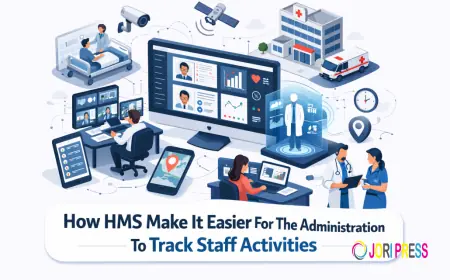First-Time Buyers: What to Expect in Bike Insurance Cost
Buying your first bike is an exciting milestone. Whether it’s for daily commuting, weekend joyrides, or just ticking off a bucket list, the thrill of two-wheel freedom is unmatched. But along with the engine rev and wind in your hair comes an important responsibility—getting bike insurance. And if you're new to this world, you're probably wondering, “How much does bike insurance cost?” The truth is, the cost of bike insurance isn't one-size-fits-all. It depends on several factors, and understanding these can help you plan better, avoid surprises, and even save money. This guide will break it all down for first-time buyers so you know exactly what to expect when it comes to bike insurance cost.
What Affects Bike Insurance Cost?
The bike insurance cost is influenced by a number of elements. One of the biggest factors is the type of bike you ride. Sports bikes, for example, usually come with higher premiums due to their power, higher risk of theft, and accident rates. On the other hand, commuter bikes and standard models usually have cheaper insurance because they’re considered low-risk.
Next comes the age of your bike. Newer bikes are more expensive to insure because they’re costlier to repair or replace. If you're buying a used bike, expect the premium to be lower, especially if it's several years old and not a high-performance model.
Another key point is your location. Living in an area with higher crime rates or frequent accidents can bump up your bike insurance cost. Insurers evaluate your postal code and factor in things like theft statistics and accident history before quoting your premium.
First-Time Buyer? Expect These Costs
If you're a first-time buyer, you might not have a riding history. That lack of experience means higher premiums. Insurers see new riders as higher-risk simply because they haven't had time to prove they’re safe and responsible.
Another cost you might not expect is the excess fee. This is the amount you’ll have to pay out-of-pocket if you make a claim. Lower premiums might come with higher excess, so it’s important to find a balance that fits your budget.
Don’t forget about optional add-ons. Coverage for pillion riders, roadside assistance, or zero depreciation can raise your overall bike insurance cost, but they offer peace of mind that might be worth the extra expense, especially for first-timers.
Types of Bike Insurance and Their Costs
There are mainly two types of bike insurance policies: third-party and comprehensive. Third-party is the most basic and cheapest option—it only covers damage to others, not your own bike. If you're just looking to ride legally and keep costs low, this might be for you.
Comprehensive insurance, on the other hand, covers both third-party damage and your own bike. It also includes theft, fire, and natural disasters. Naturally, it’s more expensive, but it offers broader protection. Most first-time buyers who’ve spent good money on a new bike tend to choose comprehensive coverage despite the higher bike insurance cost.
How to Reduce Bike Insurance Cost
The good news is, even first-time buyers can take steps to bring their insurance costs down. First, always compare quotes from multiple insurers. Prices vary, and shopping around gives you an edge.
Consider taking a certified bike safety or riding course. Many insurers offer discounts for trained riders, and it’s a win-win—you become a safer rider, and you save money.
Installing anti-theft devices or parking your bike in a secured location can also lower your premium. These safety measures reduce the risk for insurers, which they often reward with discounts.
Opt for a higher voluntary excess if you're confident about your riding habits. Just make sure it’s an amount you can afford if something goes wrong.
Hidden Charges to Watch Out For
Some first-time buyers are caught off guard by hidden fees in their bike insurance. These could be policy setup fees, cancellation charges, or fees for making changes to your policy. Always read the fine print and ask your insurer about additional charges before committing. A low premium might not be such a good deal if it comes with lots of hidden costs.
The Role of Your Riding Profile
Your personal details also impact your bike insurance cost. Younger riders, especially those under 25, usually face higher premiums because of the perceived higher risk. Similarly, if you have a poor driving record or any traffic violations, expect the premium to reflect that.
Insurers may also look at your occupation, how often you ride, and whether you use the bike for personal or business reasons. Each of these factors helps them gauge your risk level and adjust your premium accordingly.
When to Renew and Review
Once you’ve bought your policy, don’t just forget about it. Insurance isn't a one-time deal. Policies typically last a year, so it's a good idea to review your coverage annually. Over time, as you build a clean riding record or your bike depreciates, your bike insurance cost could go down. Make it a habit to compare new quotes before renewing—loyalty doesn’t always pay in the insurance world.
Conclusion
Buying bike insurance for the first time can feel overwhelming. But understanding what goes into the bike insurance cost helps you make smarter choices. From the type of bike you own to your location and riding history, every detail plays a role in shaping your premium. Knowing what to expect helps you avoid surprises and plan your budget better.
Call to Action
If you're a first-time bike owner, don’t let the insurance jargon slow you down. Do your research, compare quotes, and choose a plan that suits your needs and wallet. Ready to get on the road? Make sure your bike is insured before you twist the throttle—because freedom on two wheels feels better when you ride safe and smart.
What's Your Reaction?
 Like
0
Like
0
 Dislike
0
Dislike
0
 Love
0
Love
0
 Funny
0
Funny
0
 Angry
0
Angry
0
 Sad
0
Sad
0
 Wow
0
Wow
0


















































